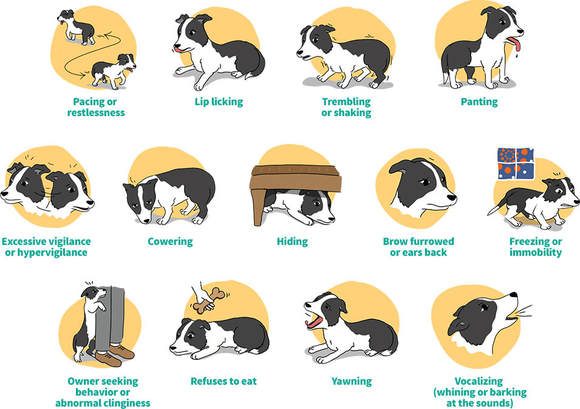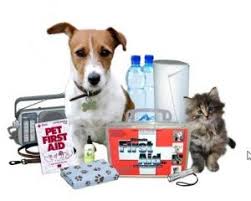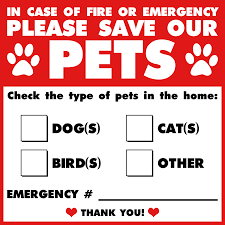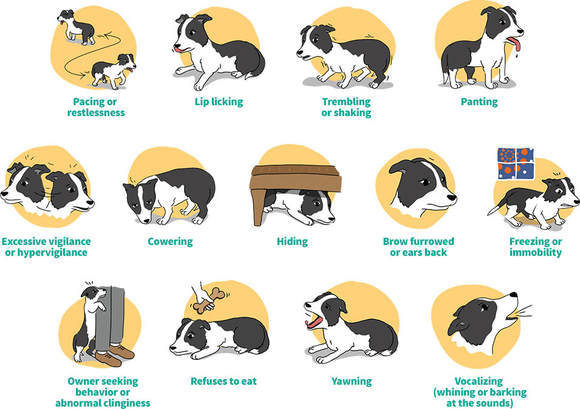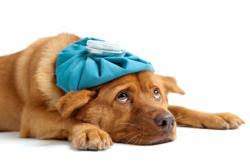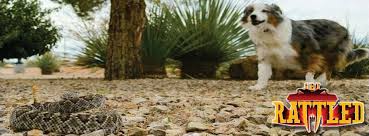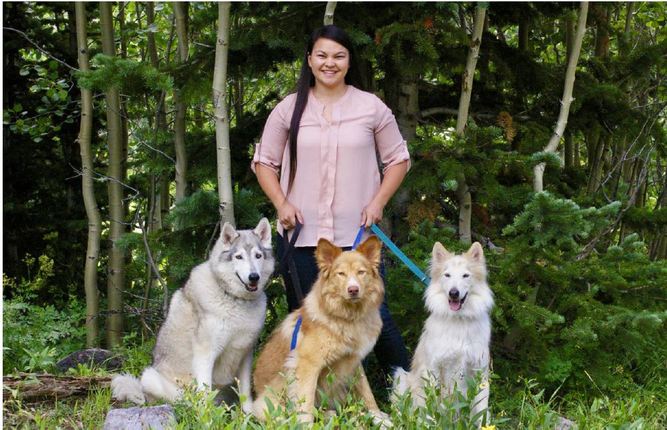 As Halloween is approaching, it is time to talk about the holidays and what they can mean for your pet. There can be many safe and fun ways for you and your pet to enjoy the holidays together, but there are also some accidents that can be detrimental to your pet's health. One accident that can happen is your dog getting into chocolate, a prevalent occurrence at this time of year. This article will discuss what chocolate does to your dog, what you should do in case of an emergency where your dog ate chocolate, and how you can prevent this from happening in the future. Chocolate is very toxic to dogs even in low doses, and just a small amount could spell trouble for your pet. Chocolate contains two dangerous compounds, theobromine and caffeine, both of which are harmful to your pet. Theobromine is the main compound found in chocolates. The reason it is toxic to dogs is that they process it much slower than humans do, making it much easier for dogs to build up theobromine to toxic levels. At small levels, it can give your dog an upset stomach or diarrhea. At higher levels, it may cause cardiac issues or seizures. These issues can be fatal if not treated immediately. The issue becomes more severe for smaller dogs than larger dogs. In case of an emergency where your dog has consumed chocolate, it is important to take your dog to a vet as soon as possible. Treatment involves inducing vomiting and monitoring for other symptoms that need to be treated, in the case of cardiac issues or seizures. The emergency veterinary hospital is usually the best case for this situation, as quick and efficient treatment is needed to reduce any chance of serious symptoms occurring. Activated charcoal may also be used to help cleanse the system of any toxic effects. In the case of you not being able to reach a vet hospital, 1-3 teaspoons of hydrogen peroxide per 10 pounds of dog will induce vomiting. It is extremely important that you see a vet regardless of whether your dog seems fine afterwards or not. The theobromine that was absorbed into your pet's system before vomiting can still be enough to cause some unwanted side effects, and that would need to be treated sooner rather than later. Prevention is the best method of protection for your dog against theobromine poisoning. Keep chocolate away from your pet's reach, and make sure that you are able to monitor any containers of chocolate if your pet is nearby. It can be difficult to train dogs to avoid eating foods they shouldn't, especially when they see that you enjoy eating it, and so keeping it out of reach is the most effective method of prevention. Alternative treats to give them as you eat chocolate may also help curb their desire to eat that Snickers bar, and occupying them with a playful activity or training can also be used to distract them from eating unwanted foods such as chocolate. We can all safely enjoy the holidays together this year, and our pets can enjoy it too. It is an exciting but stressful time for our pets, and as pet owners we should ensure our pet has the safest and most comfortable home available so they can relax. Chocolate, while a delicious treat for us, is not a good treat for dogs, whether they know it or not. Information found from these two articles: https://www.hillspet.com/dog-care/nutrition-feeding/is-chocolate-bad-for-dogs https://aspcapro.org/sites/pro/files/m-toxbrief_0201_0.pdf
7 Comments
Is it time to train your dog? I have a few tips and tricks on why it’s important to train your dogs. Reason 1: Basic training for your pet makes life a little easier for you, because it creates good habits for your dog. Reason 2: Training your dog helps to create a bond between the two of you. It helps you to pick up on your dogs silly little quirks that you otherwise wouldn’t have noticed. Training also helps you to find what motivates them and what distracts them, and can help build the trust in your relationship. Reason 3: Teaching your dog basic manners allows your pet to be welcome in more environments and situations, such as guests coming to your home or visiting the public dog park. Reason 4: Teaching your dog basic manners is helps your pet get off on the right foot in their forever home, and can help you both stay on a positive path. Puppy classes are a good place to start because they provide opportunities to develop skills with other puppies, other people, and in new environments. Other training classes provide dog owners with the skills and knowledge in dealing with common dog behaviors, such as housetraining and chewing. Basic training can provide your dog with good manners such as greeting politely, walking nicely on the leash, and coming when called. Having a good foundation of training provides your dog with the basis for any activity, behavior, or job you want your dog to be able to do. Training helps give you a broader range of activities and dog sports to choose from: dog agility, rally-obedience, dancing with your dog, tracking, search and rescue, sledding, therapy work, the list is endless! SocializationSocialization is an important part of training, particularly in puppies. We recommend keeping your puppy limited to public exposure until they have had all 3 sets of their vaccines. Once they have a complete set of puppy vaccines (usually by 16 weeks of age) they can visit more public places like the dog park, pet store, etc. When socializing your puppy we recommend: People: From infants to the elderly; different sizes, ethnicities, glasses, hats, facial hair, different clothing, anything you can think of that would be nerve racking to your pet. Places: New environments like urban areas, country settings and everything in between. Visit your friends’ homes, your kids’ soccer games, and take quiet walks in the park (once they are fully vaccinated, of course!). Things: Dog-friendly cats and other vaccinated pets, household appliances, cars, busses, fire hydrants, trees and flowers. Anything you can think of that may be new to your puppy probably is so the sky is your limit! Activities:
Pleasant car rides, a positive trip to the veterinary’s office just to get treats, and other activities your pup might enjoy. Puppy class is one of the best places for socialization! The 4th of July is coming, people are hustling and bustling to get ready for their parties, they are buying all the fixings for a good 4th of July party and that usually includes what pet owners dread most; fireworks. We know summer thunderstorms are on their way, and pets sense their arrival. Dealing with a panicked pet is stressful. Knowing the signs of stressCommon signs include panting, pacing, drooling, barking, licking their lips, hiding, etc. If your dog hears the booming noise of a firework or a thunderstorm you know you are in for a long night. Be sure to monitor your pet for changes in their behavior, especially if you don’t know if they have ever been around loud noises or bright flashes. Provide comforting distractionsIf you know there will be fireworks or know a thunderstorm is coming, try to create a safe place for your pet. A safe place may be in a quiet secluded room; maybe a bathroom downstairs towards the middle of the house with the fan on would be helpful as well. If you don’t have a fan, maybe try a white noise machine or playing some gentle music to help drown out the booming sounds. If your dog is motivated by food maybe try a Kong toy, or something similar, filled with their favorite treats. To fill the gaps of the toy you could use peanut butter, yogurt, or applesauce and then freeze it so it’s hard by the time the fireworks start so they have an enjoyable treat to work on. KONG recipes You could also comfort your dog in a loving voice. Holding them and speaking in a soothing tone may help them relax. Try playing fetch or tug-of-war with their favorite toy. When your dog hears the booming noise they feel a very genuine panic and you may be their only comfort. If your pet still seems anxious try putting them in a room with a TV or a radio on to help distract them. You could also try putting a Feliway (for cats) or Adaptil (for dogs) wall diffuser. MedicationsIf you have tried everything you can think of but nothing is working you should consult your family veterinarian about what would be best for your dog. We have many different options that may or may not work for your dog. Alprazolam and Trazodone are good medications to try; but please consult your family veterinarian first.
Many dog owners do not realize the risk snakes can pose to their pets, whether at home or outdoors. An encounter with a rattlesnake is one of the most troublesome experiences for dogs and humans, but all it takes are a couple good sessions of training and education to avoid harmful consequences. Rattlesnakes are known to inhabit a wide variety of terrains, from mountains to plains to deserts and can be found in all 48 contiguous United States. There are 32 species of rattlesnakes, and all of them share two traits – the famous rattling sound and venom! A bite can cause extreme pain, threat to life, and permanent damage to dogs, in addition to the high cost of treatment can run in the thousands of dollars. Most people understand the gravity of the situation, whereas dogs are far more likely to be bitten by a rattlesnake due to their curious nature. A rattlesnake bite can cause extreme pain, threat to life, and permanent damage to dogs, in addition to the high cost of treatment. To ensure that no dog or family member faces the risk of such life-threatening encounters, GetRattled has been conducting an exclusive Rattlesnake Avoidance Training for dogs for the last 19 years, having trained tens of thousands of dogs to avoid rattlesnakes. “At our training classes, we create a course with different stations and expose your dogs to a variety of scenarios that draw their attention to various aspects of rattlesnakes, focusing their awareness on the sight, sound and smell of rattlesnakes. There are countless different scenarios in which your dog may find a rattlesnake, so we like to prepare for a wide variety of these,” Says John Potash, Founder and Owner, GetRattled. Rattlesnake Avoidance Training is conducted in small groups of dogs on a per hour basis, with most sessions lasting less than an hour, though keeping a full hour aside is recommended. The group will be given a brief educational presentation with Q & A by one of our instructors at the front of the hour. From there each dog undergoes the training one at a time with training tailored to the individual based on prior information about each dogs unique and specific character. This allows for complete attention to your dog in a safe and secure environment using tried and true methods developed over 19 years of providing this life saving service. Over 40 such classes are held each year in six states. Training sessions have been successful in teaching dogs to avoid rattlesnakes in breeds ranging from Great Danes to Chihuahuas. “A common question is, when is the best time to train your dog? The answer is NOW!” says John Potash. This is on most people’s mind in Spring when snakes are most active, but Fall training is equally valuable to better prepare them for the next season. The training is designed to last for years and often the lifetime of the dog, though periodic reinforcement training is sometimes recommended. Another unique aspect of GetRattled is that the training sessions also ensure the safety of rattlesnakes employed. “To us, the rattlesnakes are team members and not just tools. We take the best care of our snakes and will keep them till the day they die. We still have 4 of our original 5 snakes, each over 20 years old. They are retired from dog training but we still use them for other educational displays and presentations,” says John. Besides rattlesnakes, GetRattled also offers avoidance training for porcupines (Get Quilled), and poisonous toads, and is aiming at including skunks too (Get Skunked). Potash is licensed by the Nevada Department of Wildlife and has spent over 25 years dealing in areas of animal control, wildlife rescue and public education. GetRattled works with local host businesses and organizations to offer these life saving courses to the communities. North Ogden Animal Hospital will hold the Rattlesnake Avoidance Training sessions as per the following schedule: Date: Saturday, June 1st
Venue: North Ogden Animal Hospital Durations 8am-5pm **We will be filling our morning times first then the afternoon Cost: $130 for new clients, $90 for retrain. To Register: Call: 801-782-4401 Email: noahstaff@comcast.net Dental Prophylaxis and Treatment at North Ogden Animal HospitalWe perform dental cleaning and polishing to prevent dental disease. This is recommended yearly in pets that have consistent in-home care and proper diet. Cats require about 15-20 minutes under anesthesia and dogs require 30-40 minutes. Price varies depending on age and size of pet. We will provide you with an estimate tailored to your pet's individual situation. This price includes hospitalization, pre-medication, human grade anesthesia induction, monitoring during anesthesia, dental scaling above and below the gum line,. comprehensive evaluation of each tooth, polishing and fluoride application. If further dental treatment is anticipated we will give you an approximate estimate. Our goal is to get and maintain a healthy and comfortable mouth for your pet. Dental disease starts with the accumulation of plaque. If plaque remains for 48 hours it turns into a rock hard substance called tartar. Plaque can be removed by brushing. Tartar can only be removed by scaling. At first the gums (gingiva) will become red and then swollen. Most pets will have no symptoms, but sometimes they will drool, hesitate while eating, or stop eating dry food. Bacteria infect the area causing bad breath. Periodontitis (the progressive loss of bone surrounding the teeth) soon develops. Bone loss is irreversible. If it is allowed to continue, the tooth/gum will be painful and eventually the tooth will loosen and fall out. Bone infections can be severe enough to cause fractures or abscesses that drain onto the face or into the nose. As the pet eats, bacteria can enter the bloodstream through the inflamed tissue and damage other organs such as liver, heart or kidneys. In addition, airborne bacteria are continually inhaled, leading to lung problems. There are many reasons that dental disease can develop. Small breeds are more prone to accumulate tartar and develop severe bone infections sooner than large breeds. Genetics can play a large role. Just as with some people who tend to get cavities more readily than others, some pets are prone to dental problems. Our recommendations include daily brushing, dry food (preferably T/D), tartar control chews, and/pr daily antibacterial rinses. We do not recommend offering bones since they commonly cause fractured teeth. We would be happy to tailor a plan to you and your pet's temperament. The following is a summary of what services we can provide your pet. Each pet's needs will be different and we will provide you with an estimate of our recommendations based on a thorough physical exam of your pet. Pre-anesthetic physical exam. We will listen for heart murmurs, abnormal rhythms, or abnormal lung sounds. We will alert you if irregularities exist. Chest x-rays or an ECG may be recommended. We will educate you about specific risk factors your pet may have and the tools we will use to minimize those risks. Pre-anesthetic blood screen. Not all conditions are readily detectable on a physical exam. By completing a prescreen in a pet less than 7 years and a complete blood screen in a pet greater than 7 help us detect and treat problems even before your pet shows signs of illness. If any significant abnormalities are found we will contact you. It is preferable, but not required, to have this completed before the day of the dental. Intravenous fluids. Just as is standard with human medicine, we use IV fluids to help maintain blood pressure during anesthesia, prevent dehydration, shorten the recovery period and provide access for injections without stress. IV fluids are especially valuable for elderly patients (older than 7 years) or those with kidney problems. Blood Pressure and ECG (Heart) Monitoring. These advanced monitoring tools allow us to fine-tune our anesthetic levels making anesthesia safer for your pet. These are the same tools human anesthesiologists us on us! General Anesthesia. We induce general anesthesia with an injection then then place a tube in your pet's windpipe. This protects their lungs from the fluid generated by teeth cleaning and allows us to assist their breathing if needed. Our anesthetic protocols are designed to be as safe as possible and are individually planned base on your pet's size, health, breed and age. We provide warmth during the procedure via several methods. We continue to monitor and warm them during recovery. Scaling and evaluation. We will remove the tartar above and below the gum line using a state of the art ultrasonic scaler. Each tooth and surrounding gum will be evaluated. Dental x-rays. Since pets can't tell us if they are in pain, we rely heavily on dental x-rays to help us decide if the root and the surrounding bone is healthy (try telling your dog that you have a dull ache in the left side of your mouth). X-rays are indicated if there is any evidence of neck lesions (painful cavity-like lesions on the neck of the tooth), bone loss, gum inflammation, fractured or discolored teeth or after dental extractions. Extractions. Our goal is to resolve painful conditions experienced by your pet. This may require the removal of teeth which cannot be salvaged. Pets do amazingly well afterwards. We use the most current equipment and extraction techniques to minimize trauma and promote rapid healing. Within a few weeks the once painful site is replaced by hard gum tissue. With very painful conditions, often pet owners remark to us that within a few days their pets are feeling better than they have in years. Even those pets with no teeth left often continue to eat dry food without difficulty. If your pet has had major extractions, we often recommend that they be hospitalized overnight on IV fluids. They are given any pain medications or antibiotics that are needed and kept warm and are kept comfortable. They typically go home the next morning, well rested and hydrated. Fractured teeth. If we identify fractured teeth with pulp exposed on the inside of the tooth, our recommendation is extraction or root canal therapy. If the pulp has been exposed, the body can never wall it off completely and bacteria will continue to travel down through the tooth root, causing nerve pain and infection. A large percentage of fractured teeth will progress to an abscess. This may go undiagnosed for years if dental x-rays are not taken. We are happy to refer you to a veterinarian who performs root canals if you desire to save the tooth. Pain control. We use several methods to control any discomfort associated with the dental procedure. If there were extractions, you can expect your pet to show some tenderness for a few days and we will prescribe meds to help. Local anesthetic blocks (just as are used in human dentistry) allow us to use lower doses of general anesthetic and provide hours of pain control during your pets recovery. We will prescribe pain medications for a few days afterward if teeth were extracted. Your pet’s comfort is very important to us! Polishing and fluoride treatment. After cleaning, the mouth is flushed with an antibacterial solution and examined for completeness of cleaning. The teeth are then polished smooth to slow tartar accumulation. A fluoride application decreases sensitivity of teeth and also slows tartar buildup. Follow-up. We will discuss any special care after anesthesia when you pick up your pet. Tartar begins accumulating within days after a dental cleaning and we will help you make a home care plan that works for you and your pet. Brushing can be started one week after a simple dental. Home care can make a profound difference in the health of your pet’s mouth, and greatly decrease the cost of further dental treatments.
It’s important to have a plan for your pets should a disaster occur. Have your pets wear a collar and with updated identification tags and contact information. Having your pet’s microchipped with current contact information is also a good way of making sure your pets are reunited with you if you are separated. Purchase a pet carrier for each pet and have your pet’s name, your name and contact information on each carrier. In order for your pets to be cooperative in the event of an emergency, help familiarize them with their individual carrier and practice catching and transporting them. Keep a leash and their carrier near an exit for a quick and easy get away.
In case of a disaster, include items for your pets in your preparedness kit. Items recommended by the Weber-Morgan Health Department in the Family Emergency Preparedness guide are pet food and water, any medications with clearly labeled directions your pet may be on, your pet’s medical records, litter box, food and water dish, first aid kit, and information sheet with your pets name, feeding schedule, and any medical care or behavior problems.
***The information gathered for this post is from the Weber-Morgan Health Department in the Family Emergency Preparedness guide; Disaster Preparedness for Your Pet from Centers for Disease Control and Prevention
The 4th of July is coming, people are buying fireworks for parties, and pet owners are dreading the stress of dealing with a panicked pet. Summer thunderstorms are on their way, and pets sense their arrival. Knowing the signsCommon signs include panting, pacing, drooling, barking, licking their lips, hiding, etc. If your dog hears the booming noise of a firework or a thunderstorm you know you are in for a long night. Be sure to monitor your pet for changes in their behavior, especially if you don’t know if they have ever been around loud noises or bright flashes. Providing comforting distractionsIf you know there will be fireworks or know a thunderstorm is coming, try to create a safe place for your pet. A safe place may be in a quiet secluded room; maybe a bathroom downstairs towards the middle of the house with the fan on would be helpful as well. If you don’t have a fan, maybe try a white noise machine or playing some gentle music to help drown out the booming sounds. If your dog is motivated by food maybe try a Kong toy, or something similar, filled with their favorite treats. To fill the gaps of the toy you could use peanut butter, yogurt, or applesauce and then freeze it so it’s hard by the time the fireworks start so they have an enjoyable treat to work on. You could also comfort your dog in a loving voice. Holding them and speaking in a soothing tone may help them relax. Try playing fetch or tug-of-war with their favorite toy. When your dog hears the booming noise they feel a very genuine panic and you may be their only comfort. MedicationsIf you have tried everything you can think of but nothing is working you should consult your family veterinarian about what would be best for your dog. We have many different options that may or may not work for your dog. Alprazolam and Trazodone are good medications to try; but please consult your family veterinarian first.
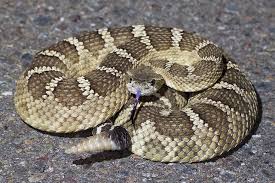 Rattlesnakes can be found in the wetlands, deserts and forests, from sea level to mountain elevations. Locally snakes are active when the weather is warm (spring to autumn), thought further south in warm climates they can be active almost year-round. Rattlesnake bites are considered a serious veterinary emergency and require immediate action. Snake bites result in injury or death to thousands of dogs each year. Treatment for rattlesnake bites can be quite costly, from the anti-venom itself to hospitalization, IV fluids and supportive care. The anti-venom may also cause an adverse reaction to venom and prolonging the time available to seek emergency medical care. This vaccine can reduce the impact of the venom, making treatment shorter and decreasing the likelihood of anti-venom and hospitalization needed. Another way to protect your dog when you are out running, hiking, camping, or hunting, is to avoid rattlesnakes all together. Training in rattlesnake avoidance can help your dog eliminate a situation where a bite can occur, preventing the need for emergency care at all. We host annual rattlesnake avoidance classes using the company Get Rattled base out of Reno, Nevada. Our upcoming 2018 classes will be held this June 2nd and 3rd. Get Rattled uses decades of combined knowledge in different aversion training methods, and offer fact vs. fiction education to pet owners. **Information gathered for this post sourced from literature provided by the Red Rock Rattlesnake Company and Get Rattled.
Dr. Marie YamaneDr. Yamane is originally from Syracuse, UT; she received her bachelors in Animal, Dairy and Veterinary Science from Utah State University in 2014. She attended veterinary school through the WIMU regional program where she attended 2 years of vet school at USU and finished up her last two years of school at Washington State University in Pullman, WA. She is a recent graduate, but is excited to see your pets and be back in Utah. Some of her interests include behavior, soft tissue and internal medicine. In her spare time she enjoys anything that involves her three northern breed dogs and her family.
20 Foods your dog should NEVER eat..Food kept in your house may be tasty but many are toxic for your dog. Here are 20 foods your dog shouldn’t have: Alcohol Mushrooms Yeast/Dough Caffeine Onions Tobacco Dairy Sugar-free Gum & Candy Macadamia Nuts Chocolate Ham Spicy foods Nutmeg Seeds/Pits Salt (in large quantities) Chives Avocado Garlic Grapes/Raisins Broccoli (in large quantities) 10 Cat household Poisons...Your household items may cause your cat to become very ill or be toxic to them. Here are 10 items you should keep out of reach: Aspirin Lilies Ibuprofen (i.e. Advil) English Ivy Marijuana Acetaminophen (i.e. Tylenol) Rat poison Chocolate Sago Palm Amaryllis |
Author:NOAH Staff Archives
April 2022
|

